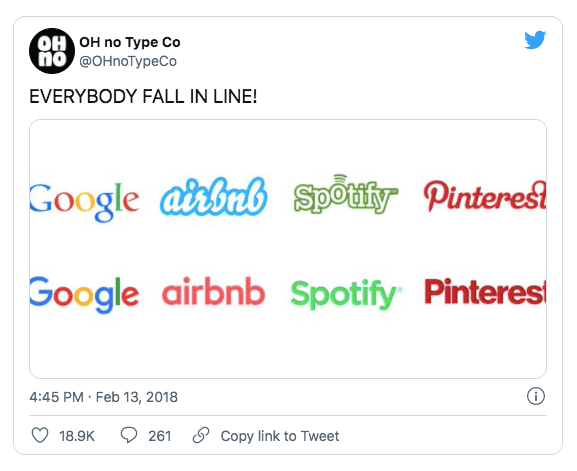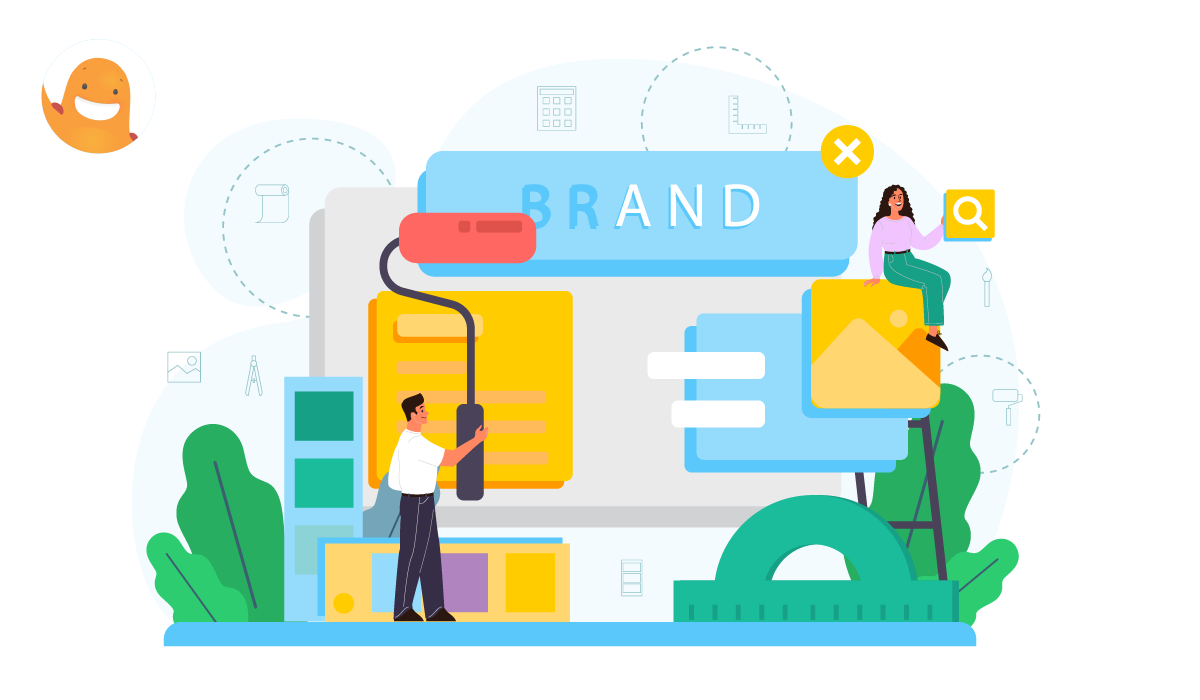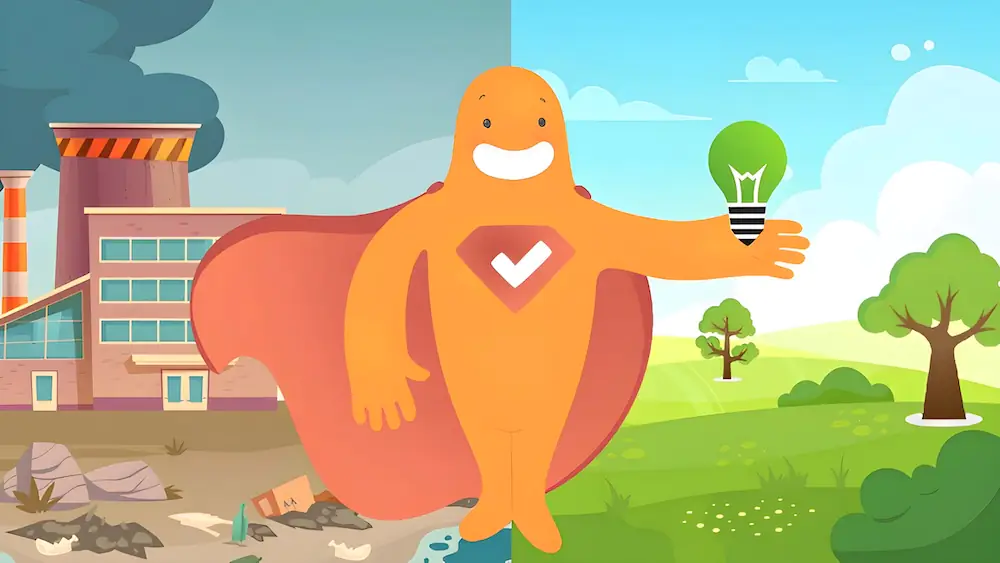Summer, 1985. Mikhail Gorbachev has just come into power. Back to the Future hits theaters. And Coca-Cola releases “New Coke” to combat dwindling sales. The consumer backlash over the New Coke rebranding was swift, and so intense that within three months, the company reverted back to its original formula. It was rebranded once again as “Coca-Cola Classic.” Sales rebound from this rebranding mistake, big-time.
Now, some people believe this was a well-thought-out scheme by Coca-Cola to gain press and increase soda sales in the long term; others just think it was a big corporate blunder. Either way, it shows just how disastrous a rebranding can be when done incorrectly. So, let’s take a deeper look at rebranding, some other rebranding mistakes, and how to avoid them.
Create your free online rebranding survey, form, or poll now!
What Is Rebranding?
Rebranding is the process of changing the corporate image of an organization. This is often done by already-established brands by altering a company or product name, logo, tagline, or overall design. Now, because the American Marketing Association defines a brand as a “name, term, design, symbol, or any other feature that identifies one seller’s goods or service as distinct from those of other sellers.” So, a brand is more than its visual elements or the sum of its features. A brand is ultimately the perception consumers have of a company or product.
For example, let’s say someone drives a Mercedes or wears a Burberry coat because of the prestige and exclusivity they feel by owning them. Now, if either company were to create lower-end products making the brand more accessible to everyone, they may change consumer perception of the brand. Suddenly, the prestige and exclusivity of owning either product are gone for many people without the company ever-changing its logo, name, etc.
Why Do Companies Rebrand?
Rebranding may happen for a number of reasons. Generally, a company is doing a proactive rebranding or a reactive rebranding. Proactive rebranding is done when a company recognizes that there is an opportunity to grow, innovate, reconnect with purchasers, create a new niche, or tap into new businesses or customers. On the other hand, reactive rebranding is done in a situation when the existing brand has been discontinued or changed; this could be due to mergers and acquisitions, legal issues (financial or fraudulent), or negative publicity.
Successful Rebranding Efforts
Before looking at rebranding mistakes and how to avoid them, let’s take a look at some successful rebranding campaigns.
Burberry
Since we mentioned this brand earlier, let’s revisit it. Burberry was founded in England more than 150 years ago, but over time, it became at risk of being dismissed as frumpy; worse, some people began to consider it gang-wear when rumor had it that gang members were donning it (the brand was even banned at some pubs).
That’s when new leadership stepped in and commissioned a savvy product design that overhauled the brand with a mix of modern and classic looks. Today, it’s once again considered a luxury fashion label, now worn by high-profile celebrities like Kate Moss and Emma Watson. Sales rose 27% to $747 million following the rebranding.
McDonald’s
Often thought of as simply a kid’s restaurant because of its play areas and ubiquitous clown, things got worse for McDonald’s when it became known for “making America fat” and was mocked in the documentary Super Size Me. In response, McDonald’s set out to rebrand itself, offering salads and healthier options like fruit slices.
In addition, it transformed many locations into fancier places with “coffee house” appeal and changed its slogan to “I’m Lovin’ It,” with an original song by Justin Timberlake. While some were critical of the changes, the McMakover reported a more than 5% increase at most locations (topping the average forecast from analysts of 4%).
Walmart
With the slogan “Always Low Prices,” Walmart was considered a cheap discount store by many. In an effort to retool its image, the retailer replaced its slogan with “Save Money. Live Better.” This put a positive spin on the savings aspect and turned it into more of a lifestyle brand. The company also designed new interiors, signage, and merchandising concepts.
REBRAND, an organization that judges companies on their rebranding efforts, awarded Wal-Mart a REBRAND 100 Global Award of distinction for its marketing campaign.
Biggest Rebranding Mistakes
Okay, we’ve had a look at some successful rebranding efforts. Now, let’s take a look at some infamous rebranding mistakes.
McDonald’s
They made the best and worst list! In 1996, before their successful rebrand in the ’00s, McDonald’s took its first swing at attracting more sophisticated adult customers by introducing “The Arch Deluxe,” a new burger with a secret mustard-mayo sauce. Ads featured a McDonald’s executive chef touting the “fancy” burger, and another with two young kids on a date (the immature boy is grossed out by the Arch Deluxe while the more sophisticated girl enjoys it). The Arch Deluxe flopped, and $100 million marketing dollars went down the McDrain.
Colgate
In 1982, Colgate was looking to expand its brand. At the same time, ready-made frozen meals were increasing in popularity. Colgate executives thought, “If people trust us for the care of their teeth, why wouldn’t they trust us for their meals? They can eat Colgate’s meals and then brush their teeth with Colgate’s toothpaste afterward!” A sure win-win, right?
Wrong! Consumers just couldn’t make the connection; after all, Colgate was known for a minty-fresh taste – who wanted a minty-fresh pot pie? Unsurprisingly, Colgate’s Kitchen Entrees were DOA and quickly retired.
Netflix
In 2011, Netflix could clearly see that its DVD-mailing service was on its last legs, and streaming services were the next big thing. As a result, they rebranded the DVD-mailing service as Quikster, while Netflix would be their streaming platform.
Of course, this rebranding of the existing service (and the original brand now being a relatively new service) confused many customers, who were unsure of which service was which and what subscriptions and pricing plans applied to each. Quicker than you can say Quikster, the DVD-mailing service was rolled back under the Netflix banner.
Pepsi
Playing second fiddle to Coca-Cola for its whole life has taken a toll on Pepsi, resulting in numerous rebrands throughout the years. So, they’ve not only failed once but twice. The first was logo branding, which took five months to complete and cost $1 million. There was an immediate backlash, but perhaps due to the time and effort involved, Pepsi kept the new look anyhow.
More recently, Pepsi tried to present itself as a soda that could “bring the world together” (probably trying to emulate Cola Cola’s famous “Buy the World a Coke” campaign). The commercial was accused of being tone-deaf by making light of U.S. “Black Lives Matter” protests by featuring Kendall Jenner giving a police officer a Pepsi and protesters thunderously applauding the gesture. “Pepsi was trying to project a global message of unity, peace, and understanding. Clearly, we missed the mark and apologize,” the company said in a statement.
Lay’s
Weight-conscious snackers had long been clamoring for healthier chips for years. So, in 1998, Lay’s launched WOW! Chips, fat-free versions of Lay’s, Ruffles, Doritos, and Tostitos. Sales skyrocketed to $400 million. But there was one problem: The key ingredient was fat substitute Olestra, which acted as a laxative. For some people, this caused “stomach cramps, diarrhea, and anal leakage” (yes, the FDA made Lay’s slap that warning on their packaging 😳 ). Unsurprisingly, sales plummeted, and WOW! Chips were soon retired.
7 Ways To Avoid Rebranding Mistakes
How can companies avoid rebranding mistakes like the ones above? Here are seven ways to have a successful rebranding.
Don’t Just Change Your Logo
With a rebranding, there is often a big reveal. So when the reveal is nothing more than a logo change, without thought behind it that will make sense to consumers, they can become upset. As noted earlier, Pepsi’s rebrand involved only a logo change, with the convoluted explanation that it plays off the “Golden Ratio… which plays an essential role in the human perception of beauty.” Likewise, when cable television’s SciFi Channel changed its name to SyFy, the explanation was that it gave them a greater ability to present shows that weren’t 100% science fiction, like fantasy and adventure movies – two types of movies that had already been showing on the channel.
Have a Reason for Rebranding
This goes hand in hand with not just changing your logo. You should have a clear reason for rebranding, not just wanting a “new look.” For example, you may want to rebrand because your brand has become outdated or offensive (consider the Cleveland Indians becoming the Cleveland Guardians, or Aunt Jemima becoming the Pearl Milling Company). Other good reasons for rebranding include when you’re targeting a new audience, have evolved into a new space, your company values have changed, you’ve received bad press, or you’ve merged with or acquired another company.
Conduct Survey Research
The best way to find out how people will react to rebranding is to survey them! With online surveys, you can reach a wide variety of people and even survey globally if you’re an international brand. Depending on consumer reaction to your marketing research survey, you could move forward with confidence, go back to the drawing board and then re-survey consumers, or simply scrap the rebranding altogether.
Avoid the “Bandwagon” Approach
You want to be a leader, not a follower. The “Bandwagon” approach is when a company jumps into the latest design trends. This Tweet illustrates perfectly how companies with unique logos all fell in line based on what was trending in the design world:

Of course, this doesn’t mean you can’t evolve your logo or design; however, chasing trends can lead to a very indistinctive brand. Finally, the Bandwagon Approach can also refer to a company trying to latch on to the latest product trends, such as Colgate did with their frozen meal failure.
Create Brand Style Guide
What’s the point in rebranding if people don’t use it correctly? To ensure everyone is on the same page (this includes internal employees and external users, such as media outlets), be sure to create a brand style guide that shows how design elements should be used and displayed (colors, ratios, etc).
Think About the Future
Where do you expect your company to be in ten years? What technologies will still be in vogue, and which will be out? What will shape people’s attitudes about products and brands? When rebranding, you need to think about these questions so that your brand is accessible and flexible 10 or 20 years down the road. Otherwise, you may have to go through the expense of rebranding all over again.
Don’t Destroy Trust
You never want to lose consumer trust in your brand, especially your flagship brands, when rebranding. This goes double when it involves people’s health, which is exactly what Lay’s did by releasing chips that could make people sick (surely they knew about the possible side effects of Olestra). While the company, of course, recovered, it did damage its reputation for a while. It’s also important to remember that social media wasn’t a thing when this happened. Otherwise, it’s safe to say the damage could have been much worse.
Conclusion
Rebranding can be tricky; done wrong, it can be a financial and public relations nightmare; done right, it can result in new customers, great press, and more sales! Be sure to check out these 25 great branding resources. And remember, one of the best ways to gauge consumer response to your rebranding efforts is through online surveys, and we’re happy to provide that service! Our templates are pre-designed, responsive, and secure. Check out our design and branding templates, along with our market research templates, and then join for free and begin creating your rebranding survey!
Has your company ever done a rebranding effort? Was it successful or not? Any other great examples of rebranding we missed? Let us know in the comments!
Create your free online rebranding survey, form, or poll now!
Frequently Asked Questions (FAQs)
The process of changing the corporate image of an organization or brand altering a company or product name, logo, tagline, design, or overall mission.
Rebranding failures include Coca-Cola’s “New Coke,” McDonald’s “Arch Deluxe,” Lay’s “Wow Chips,” Netflix’s “Quikster,” and Colgate’s “Kitchen Entrees.”
Recent rebranding includes the Cleveland Indians becoming the Cleveland Guardians because of the former being offensive to indigenous people, and Aunt Jemima becoming the Pearl Milling Company because of the former’s relation to slavery.
The best way to avoid becoming a rebranding failure is through research and consumer surveys. Always gauge a sampling of the population’s reaction to a rebranding before going public with it.




